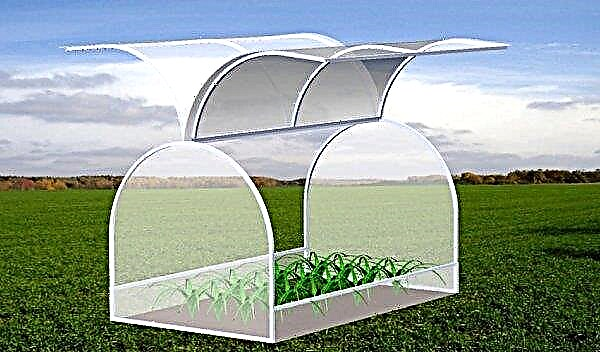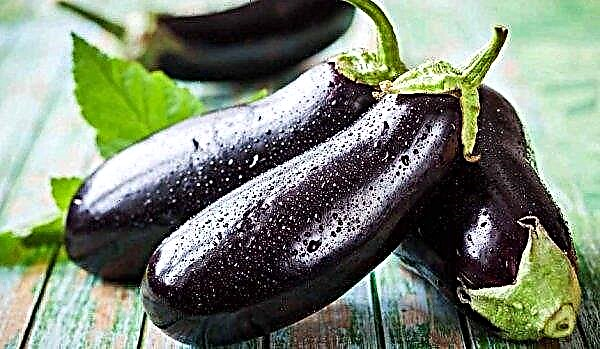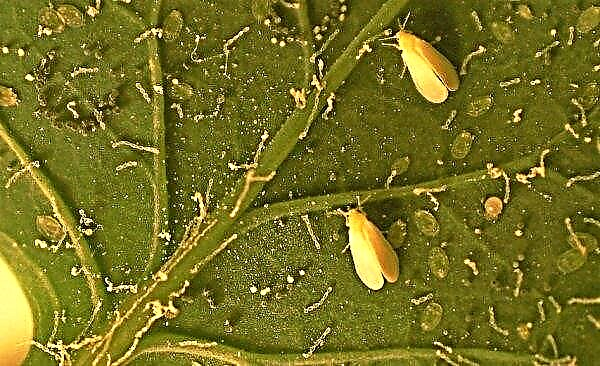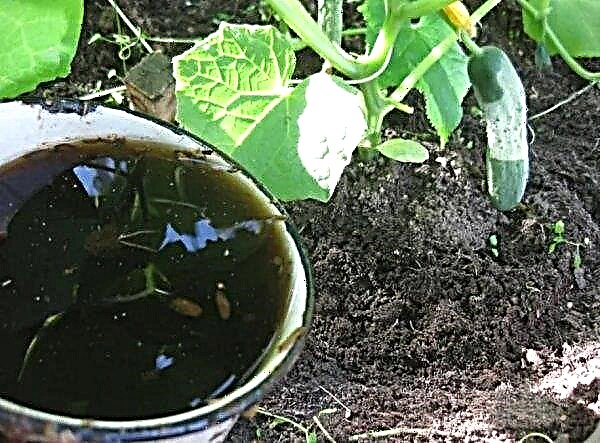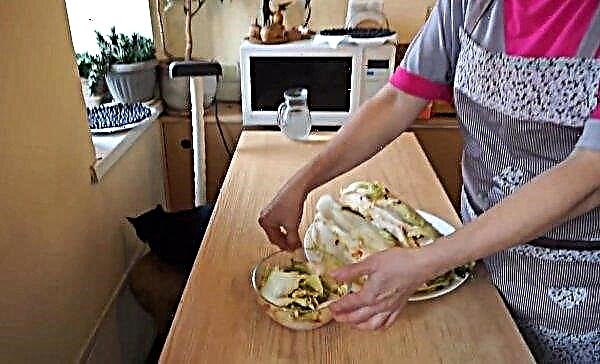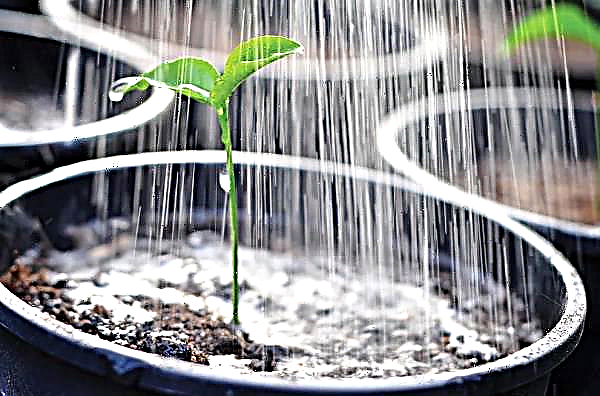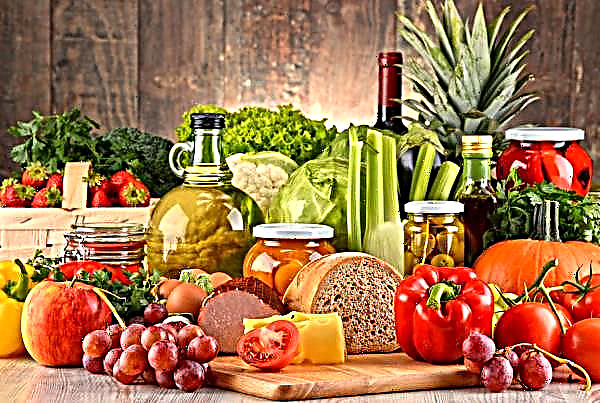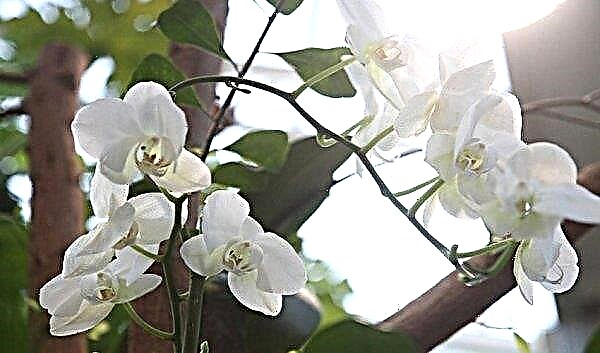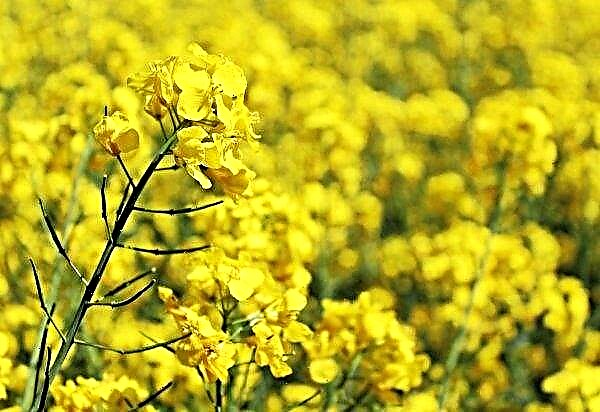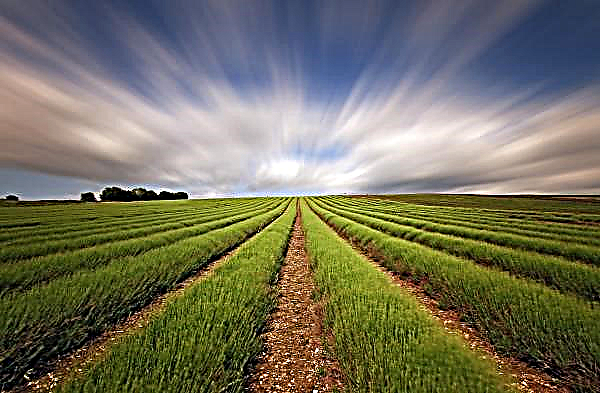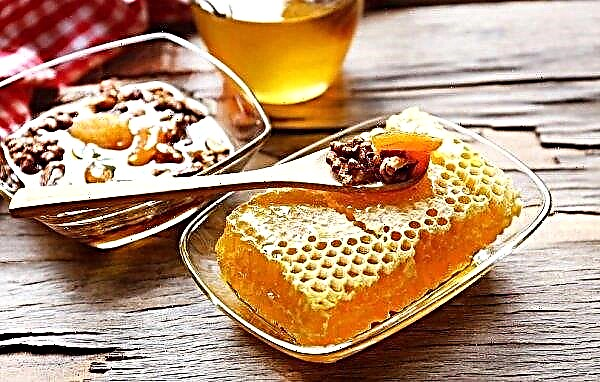Breeding work to develop new varieties of sweet tomatoes is actively ongoing. The result of this work is tomato figs. The name is due to the external similarity of fruits with figs and honey smack of tomatoes, without a hint of acid. Consider the characteristics of the red fig subspecies, especially agricultural technology.
Grade characteristics
General characteristics of the Fig variety:
- average ripening period - the fruits reach technical maturity after 110-150 days from the moment of emergence of seedlings;
- bushes of a stunted type, reach a height of 3 m;
- the ground part is sprawling, with a moderate amount of greenery - needs to be stepsoned;
- shoots are densely hairy, this gives them a greenish-bluish tint;
- leaves are large with feathery edges, dark green on the outside, and pale on the inside;
- flowers of a simple type, collected in brushes of 3-5 pieces;
- fruits are rounded, with pronounced ribbing, slightly elongated upward;
- fetal mass 300–800 g depending on the subtype;
- the inside of the fetus is multi-chamber, with a large number of seeds;
- the peel is glossy, saturated color, dense, not prone to cracking;
- the flesh is similar in color to the peel, fleshy, sugar, acid free;
- high productivity - 7 kg can be removed from one bush;
- resistant to solanaceous diseases and pests, subject to preventive measures.
Did you know? In 2003, American farmer Rob Baur planted a tomato on tobacco and as a result received a plant - tomak. True, the purpose of such selection is not clear, because no one began to try the fruits, and during the study, an impressive dose of nicotine was found in their composition.
There are 2 subspecies of the variety:
Subspecies differ in fruit color and size: pink tomatoes weigh 300–600 g, red tomatoes 400–800 g. Pink figs are more demanding in care. Otherwise, the subspecies are no different.
Advantages and disadvantages of the variety
The cultivation of Figs red has positive and negative sides.
- Advantages of the Tomato "Red Fig":
- high-quality rich harvest;
- universality in use;
- high germination of seed;
- good resistance to solanaceous diseases.
- Cons of tomato "Figs red":
- exacting care;
- the need to provide a special microclimate;
- the impossibility of growing in open ground for most regions.
Sowing seeds for seedlings and its cultivation
The variety is thermophilic, therefore, attention is paid to the organization of the microclimate. Variety suitable for growing in greenhouses. In open ground, landing is only allowed in warm regions.
Important! The temperature at night should be different from the daytime. It is necessary to provide a difference of 5 ° C. For example, during the day - +25 ° C, so at night the temperature needs to be reduced to +20 ° C.
Conditions
For a good harvest, the Tomato "Red Fig" must create a special microclimate:
- lighting - diffuse, at least 10 hours;
- temperature before emergence - +23 ... + 25 ° С;
- temperature mode after emergence - +15 ... + 18 ° С;
- soil moisture - 70–80%;
- air humidity - 60%.

Sowing Features
The timing of sowing seeds depends on the microclimate of the greenhouse:
- for heated - at the beginning of February;
- unheated - from March 15.
Seed treatment
Seeds do not need additional processing. The seed goes through the necessary procedures before being sold.
Soil preparation
Soil preparation is started immediately after harvesting. There are not so many places in greenhouses, therefore it is not always possible to follow crop rotation rules. After the crop is harvested, 15 cm of the top soil layer is removed and replaced with a new one. The soil should be loose, well permeable to moisture.
Important! Given the fact that 5–10% of the plants will die at the stage of growing seedlings and adapting it to a new place, to get 20 full-grown bushes, need to plant 24–25 seeds.
It is mixed in equal proportions from:
- peat;
- manure
- garden land;
- coarse sand.

For seedlings, you can take universal soil for solanaceous or mix in the proportions 2: 1: 1:
- garden soil;
- humus;
- sand.
Sowing technology
Before sowing, planting containers are treated with copper sulfate and dried. The soil placed in containers is leveled, slightly compacted and moistened. Sow in rows of 0.5 cm deep with a pitch between them of 5 cm. Seeds are laid out in rows at a distance of 2-3 cm and sprinkled with dry sand on top. The surface of the box is covered with polyethylene or glass. This will maintain optimal humidity and accelerate the emergence of seedlings.
In the germination phase, the seeds do not need lighting, so the boxes are placed in dark rooms where a stable temperature regime is maintained. Humidification of the soil is carried out from the spray gun as necessary. Every day, the cover is removed for a while to ventilate the soil and assess its condition. After the emergence of seedlings, the cover is removed completely and the seedlings are rearranged in a well-lit place.
Did you know? In terms of ascorbic acid content, tomato is superior to citrus fruits. Eating tomatoes throughout the season for 100–200 g per day, you can prepare the body for winter, increasing its resistance to disease. Concentration vitamin is not reduced even after heat treatment.
Dates and planting seedlings
With the appearance of 2-3 full-fledged leaves, seedlings are transplanted into separate containers, having previously discarded weak sprouts. Given that the growth of plants is immoderate, when diving, it is necessary to dig the main stem 1/3 of the length into the ground. The final transplant is carried out after 60 days from the appearance of seedlings. In heated greenhouses, planting of tomatoes can be carried out all year round, in unheated greenhouses - from May 15.
Install trellises in advance to which plant branches will be attached. Mark the area. The holes are dug 25 cm deep, at a distance of 50 cm. A distance of 60–70 cm is left between the rows.
Into each landing pit make:
- 10 g of superphosphate;
- 2 liters of warm water.
Did you know? Eating fresh and processed tomatoes raises the mood, relieves depression and accelerates the restoration of brain cells. The composition of the product includes serotonin and thiamine - substances that are involved in the construction of nerve cells and have a calming effect on the body.
Tomato Care
When growing in a greenhouse, you will need to pay more attention to dressing. Without it, plants quickly draw useful substances from the soil and stop growing. During flowering, the plants are shaken to ensure pollination. They also reduce air humidity by up to 50% and increase daylight hours to 13–18 hours. Good lighting contributes to the formation of powerful plants with shortened internodes, which simplifies maintenance.
Fertilizer
For the season, about 6 top dressings are carried out:
- 3 root using organics;
- 3 foliar using mineral fertilizers containing potassium and phosphorus.
 Use liquid mullein with the addition of dolomite flour 400 ml per plant. After 10 days, spraying is carried out using potassium monophosphate - 10 g / 10 l of water. After flowering, yeast infusion with compost is introduced into the soil. For 10 l of compost add a package of dry yeast + 1 tbsp. l Sahara. Insist 1–2 days and dilute 1: 1. Make 1 liter under each bush.
Use liquid mullein with the addition of dolomite flour 400 ml per plant. After 10 days, spraying is carried out using potassium monophosphate - 10 g / 10 l of water. After flowering, yeast infusion with compost is introduced into the soil. For 10 l of compost add a package of dry yeast + 1 tbsp. l Sahara. Insist 1–2 days and dilute 1: 1. Make 1 liter under each bush.After 10 days, they are sprayed with monophosphate. In the fruit pouring phase, 10-14 days after spraying, yeast top dressing can be used again, only without compost. In warm water bred 1 tbsp. sugar and a package of dry yeast (25 g), insist 2 hours. The resulting mixture is applied to the soil at the rate of 2 liters per plant.
Watering
To maintain soil moisture, it is better to organize drip irrigation in the form of a tape system distributed around the entire perimeter of the plantings. The introduction of fluid is combined with top dressing. For example, in the morning they feed, in the evening they water. Each plant should have 3-4 liters of water.
Stepson
Pasynkovka - a necessary procedure for growing tomatoes of this variety. It involves the removal of not only extra stepsons, but also flower brushes. The first stepsons are formed in the sinus between 5-6 leaves, in the period after the picking of plants in the greenhouse. As soon as they reach a length of 5 cm, they are removed by gently pinching with their hands. In the future, stepsoning is carried out every 10-14 days. It is more convenient to form a bush in 1 stalk.
Such a formation involves the following activities:
- removal of all lateral shoots throughout the life cycle of the plant;
- removal of the first 2 flowering brushes - manipulation allows you to increase the number of inflorescences and speed up the fruiting process;
- removal of brushes with fruits - carried out at the beginning of the fruiting phase;
- removal of all leaves located in the lower part of the bush, to the first flowering brush;
- pinching the growth point a month before harvesting the last fruits, at the top leave 2-3 leaves, free of flowers.

Soil cultivation and weeding
The soil after each watering needs to be loosened. This prevents moisture stagnation and enriches the root system with oxygen. In parallel with loosening, weeding is carried out. Loosening is carried out by glanders. In the aisles, the aeration depth is 10 cm, directly in the hole - 5 cm.
Protection against diseases and pests
The resistance of the variety to diseases and pests does not exclude their occurrence with insufficiently careful care. When infected with fungal diseases, you need to act immediately, since the fungus quickly spreads indoors and can destroy the entire crop. Affected parts of plants are removed and burned outside the site. Removal is carried out with a clean, disinfected tool, which is additionally treated after each plant. Humidity is reduced to 50%.
Then the bushes are treated with Oxychom. 20 g of the drug is diluted in 10 l of water. The flow rate of the solution is 2 liters per square. m. The last processing before harvesting is allowed to be carried out in 4 days. When pests appear on tomato plantings, a 3% solution of Bordeaux liquid is used.
Preventive measures to prevent the development of diseases and the spread of pests:
- loosening the soil;
- compliance with humidity conditions;
- preventive spraying with a 1% solution of Bordeaux fluid 3 times per season, starting from 7 days after transplanting into the greenhouse;
- thorough harvesting and replacing the topsoil.

Harvest dates and storage rules
The variety has a long fruiting period, so the last fruits are picked in September, and the first at the end of June. Harvesting tomatoes begins when they are not quite ripe. Pick fruits with cuttings. The first to shoot the most mature specimens.
After harvesting, the tomatoes are sorted by maturity and laid out in containers lined with straw in one layer. Store in well-lit rooms at a temperature of +20 ° C. Green tomatoes reach maturity in 10-15 days. In total, tomatoes are stored for 2-3 months.
Important! In unheated greenhouses, you need to have time to harvest the entire crop until the night temperature drops below +8 ° C. Fruits harvested at this temperature cannot be stored. – quickly rot.
The tomato variety Fig red is more suitable for growing indoors. It has an unusual appearance and high taste. It is demanding in care, but the costs of labor and funds are offset by the quality and quantity of fruits.

